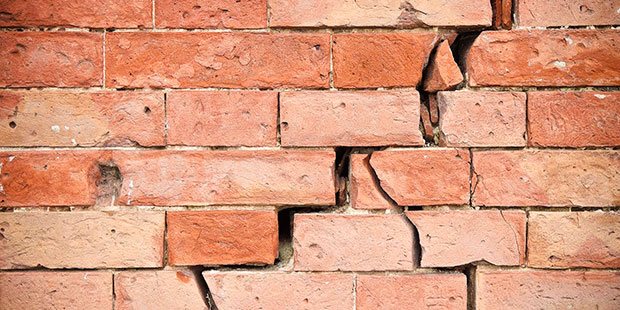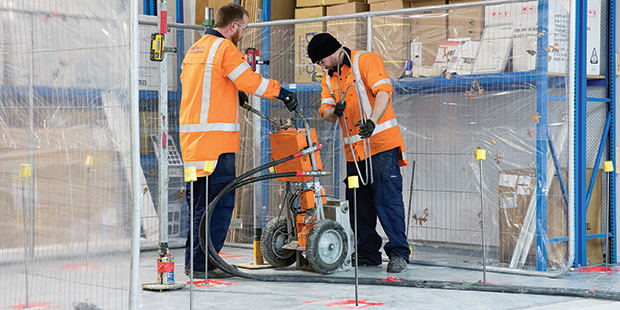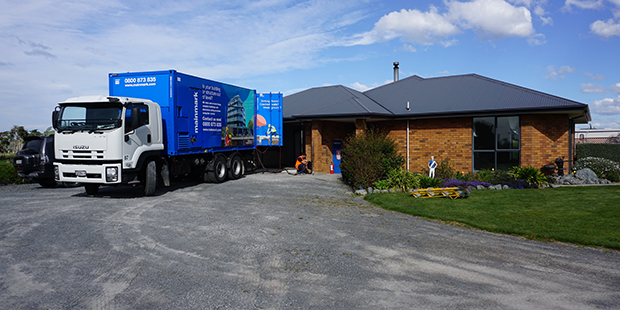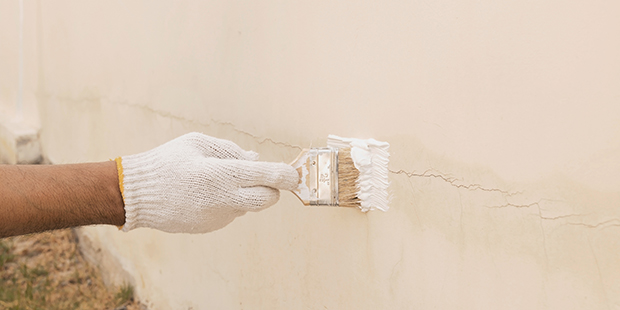Why NZ needs rescuing
Commercial buildings at risk as experts say ground subsidence likely to increase.

Sponsored by
Experts say business owners need to “act without delay” to fix buildings damaged by shifting ground.
Ground engineering specialist Theo Hnat says New Zealand is becoming more susceptible to ground subsidence – and changing weather patterns are likely to be an increasingly key factor in weakening soil.
He says: “New Zealanders should, perhaps, be more concerned about what we can’t see below the ground.”
Hnat, business and technical manager for Mainmark, says the company has already rescued more than 30,000 buildings throughout New Zealand and Australia damaged by subsidence – many of them large commercial buildings.
“What lies beneath us is constantly shifting; weak ground especially cannot adequately support the weight of buildings,” he says. “This is when subsidence can occur – and it can have devastating consequences, especially in commercial situations. If this happens, it is important to fix it right away or risk further damage.”
He says ground instability during construction can cause soil slippage. “But once a building is in place, instability can still cause movement resulting in wall cracks, the inability to open or close windows and doors, sunken floors and other issues.”
Hnat says the impact of climate change - especially when prolonged dry spells or droughts are followed by heavy rainfall - is likely to be one of the main causes of instability in the future.
“Drought dries soil, causing it to contract, while heavy rainfall leads to flooding and can wash away soil,” he says. “Both are factors likely to occur more frequently because of climate change and consequently lead to more issues of unstable or weak ground.”
This has long been a problem authorities in New Zealand have been concerned about – a 2012 Ministry for Primary Industries report, for example, warning that storm rainfalls, drought and an increase in windiness were expected to be factors in increasing the risk of erosion and landslides.
Hnat says it is important for commercial operators to fix problems in their early stages. Examples where Mainmark has been able to help in this regard include a transport yard run by dairy giant Fonterra in Te Awamutu – who put out an SOS when unstable soils beneath the yard had caused the 150mm-thick concrete floor to sink.
“A build-up of water had been allowed to form underneath, resulting in the slab moving every time a vehicle drove over it,” Hnat says. “With 500 vehicle movements every day, including 35 heavy milk tankers, Fonterra needed the yard to be fully operational as quickly as possible.”
Hnat says the solution was to use a proprietary polymer resin known as Teretek. The resin was injected into the ground at specified points and flowed into spaces in the soil.
It expanded, not only filling the voids which had caused the subsidence but re-levelling the floor and strengthening the ground beneath it.
“The project was completed in a day and avoided the time and cost needed to excavate the yard or pour new concrete,” he says. “The floor was also safe to drive on within a few hours after the application.”
Another Mainmark project - to re-level the eight-storey Kamahi Apartment block in Christchurch following damage sustained in the 2011 earthquake - used a computer-controlled grouting process known as JOG to improve the soil beneath the structure.

An iconic eight-storey residential apartment building in Christchurch was re-levelled and seismically strengthened through ground remediation works using JOG Computer-Controlled Grouting. Photo / Supplied.
An iconic eight-storey residential apartment building in Christchurch was re-levelled and seismically strengthened through ground remediation works using JOG Computer-Controlled Grouting. Photo / Supplied.
Hnat says instability usually occurs where soils with poor drainage get saturated in rainfall (clay is especially susceptible to this) or where ground is not sufficiently compacted and is washed away in storms (typically sandy soils).
But many other factors can play a part: Tree roots near buildings sucking moisture from the ground, vibrations from heavy road traffic or machinery, poorly compacted fill, earthquake and seismic activity, nearby excavation work and deterioration of retaining walls among them.
Hnat recommends thorough assessments be made of ground and soil conditions on building sites before construction begins – a view in line with recommendations expressed by the Canterbury Earthquakes Royal Commission following the 2011 earthquake which devastated the city.
A Ministry of Business, Innovation and Employment report on the recommendations said evidence from the earthquakes indicated that inadequate or inappropriate site investigations contributed to poor building performance.
The report said with increasing building activity in New Zealand, it was important to learn from this and encourage well-devised and specific site geotechnical investigations as key requirements.






